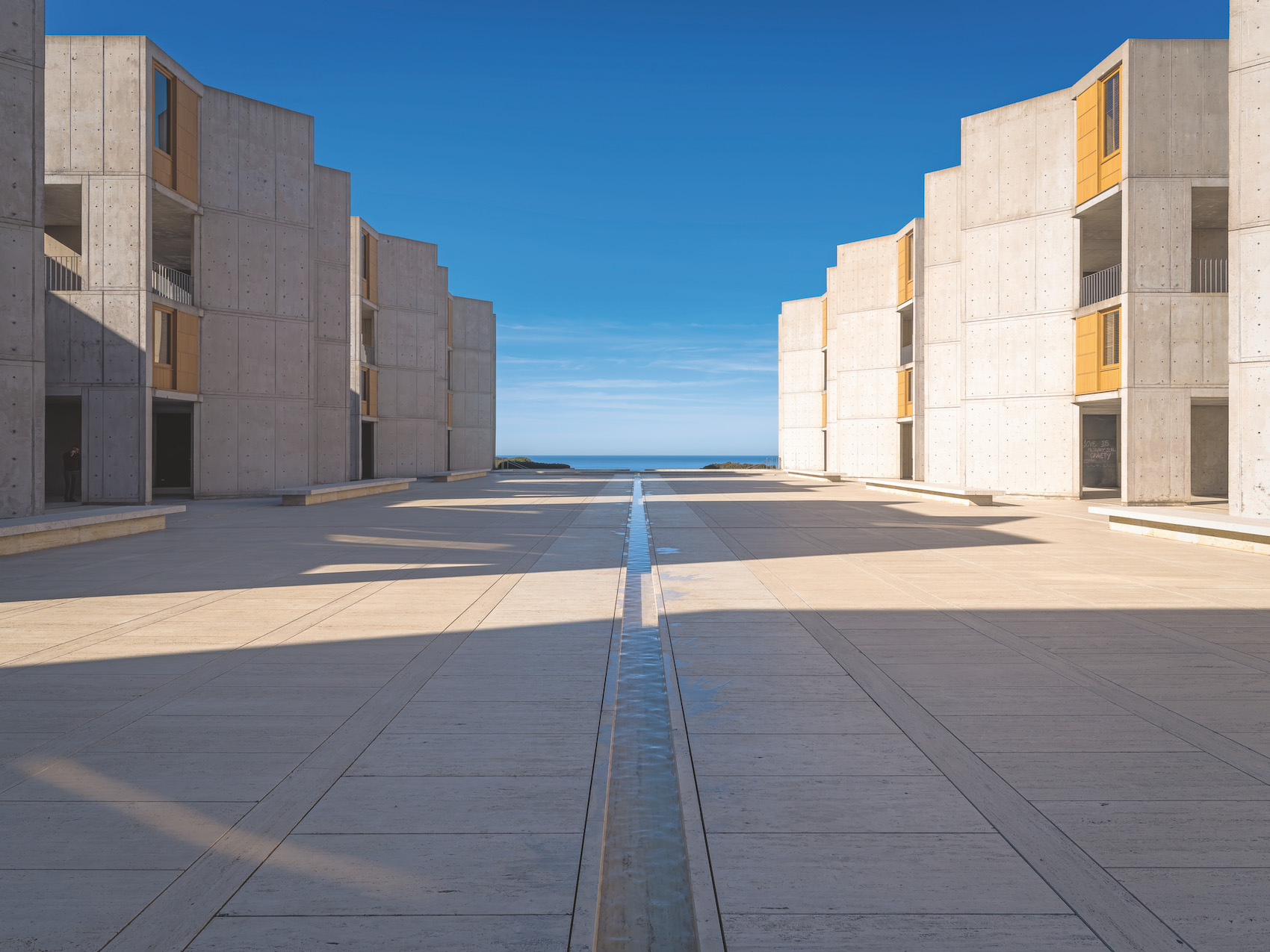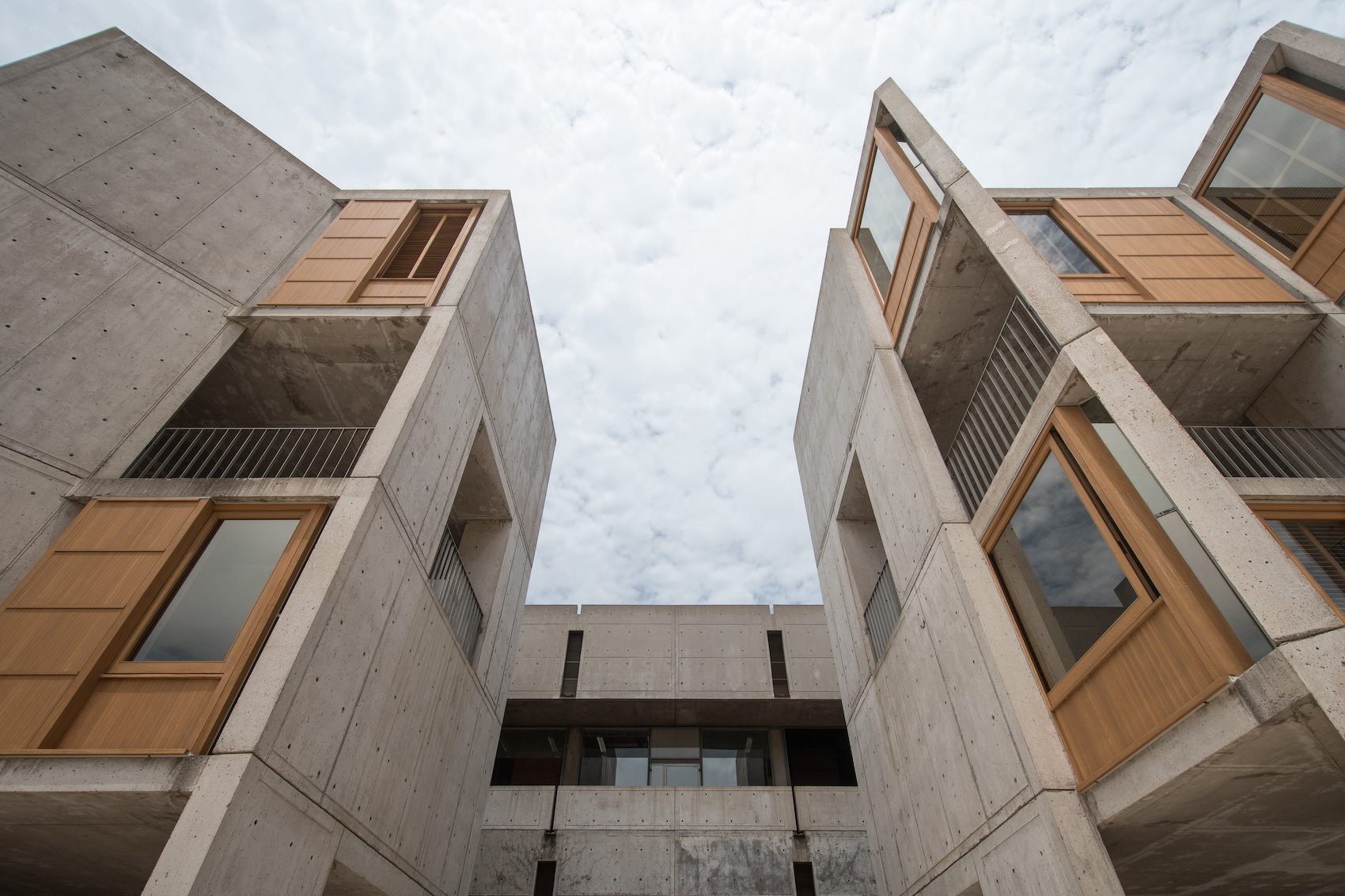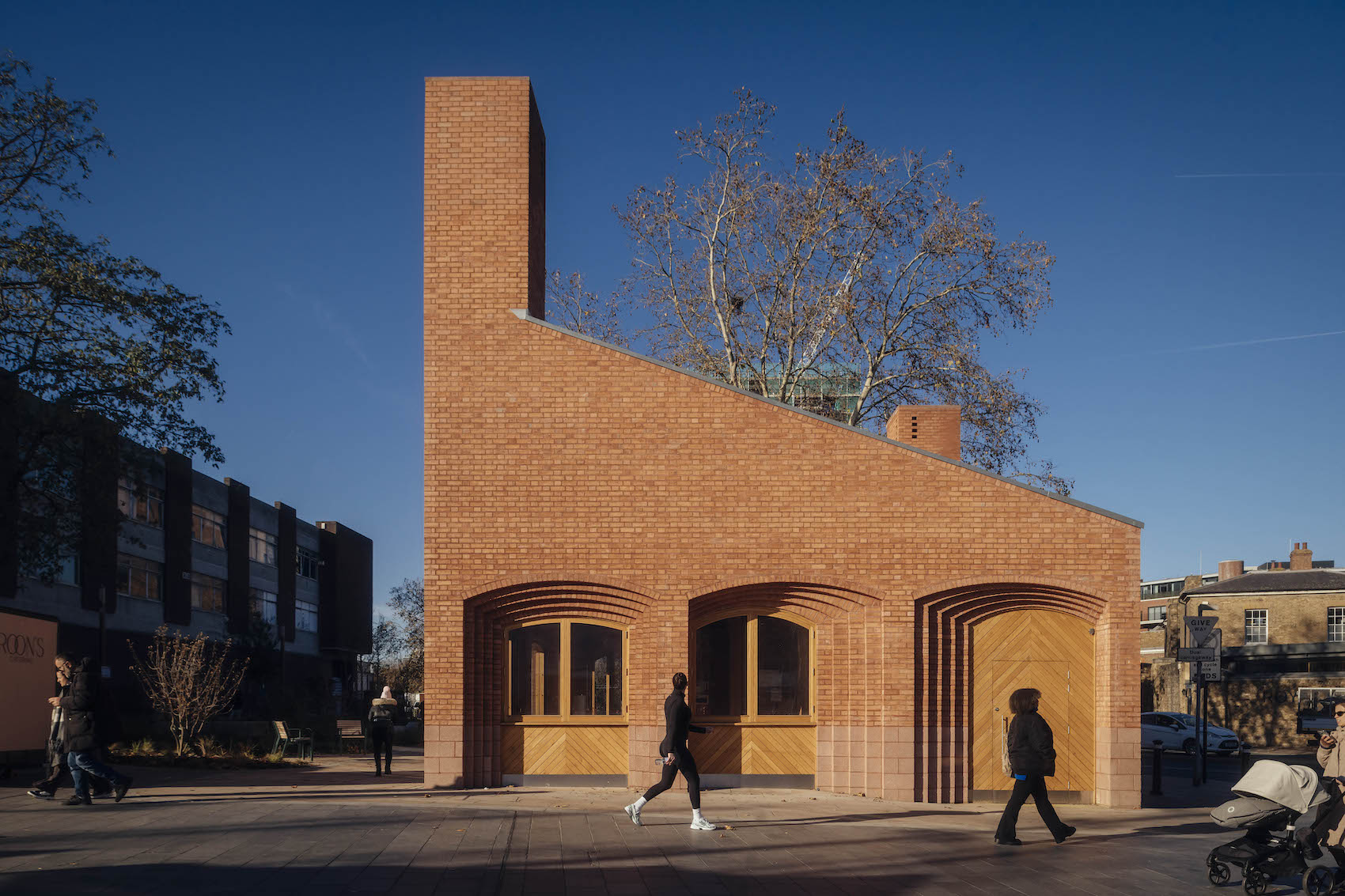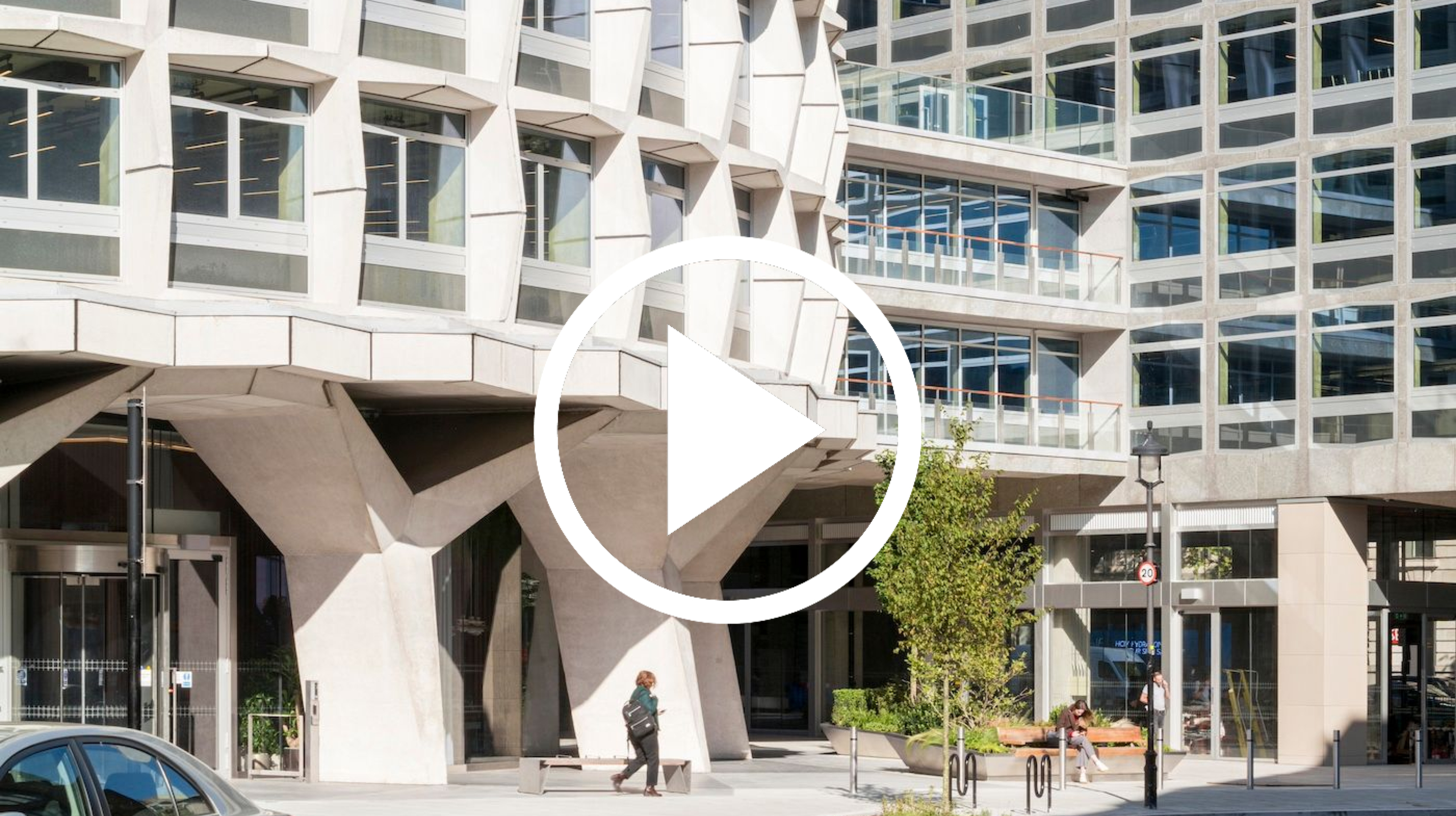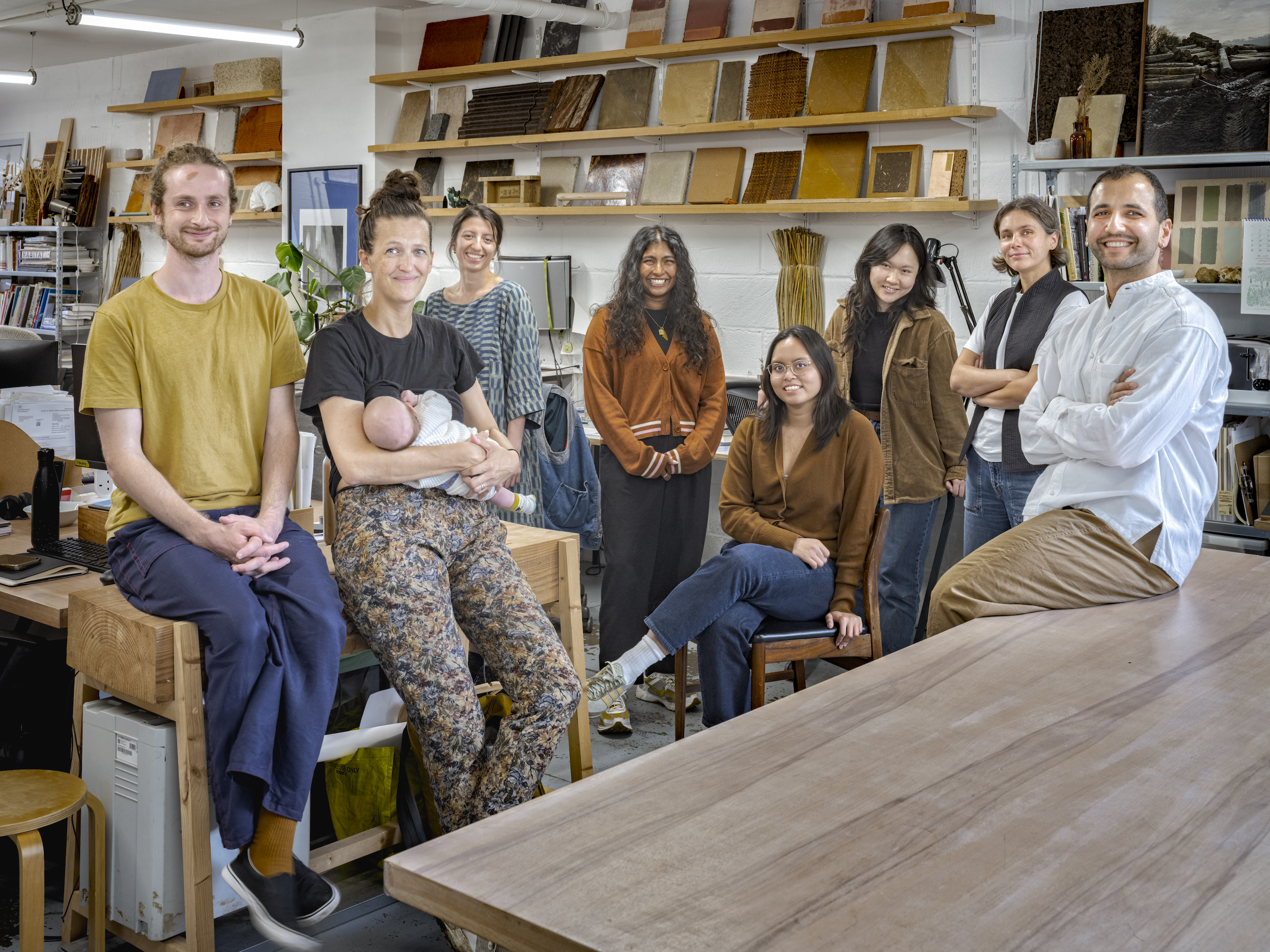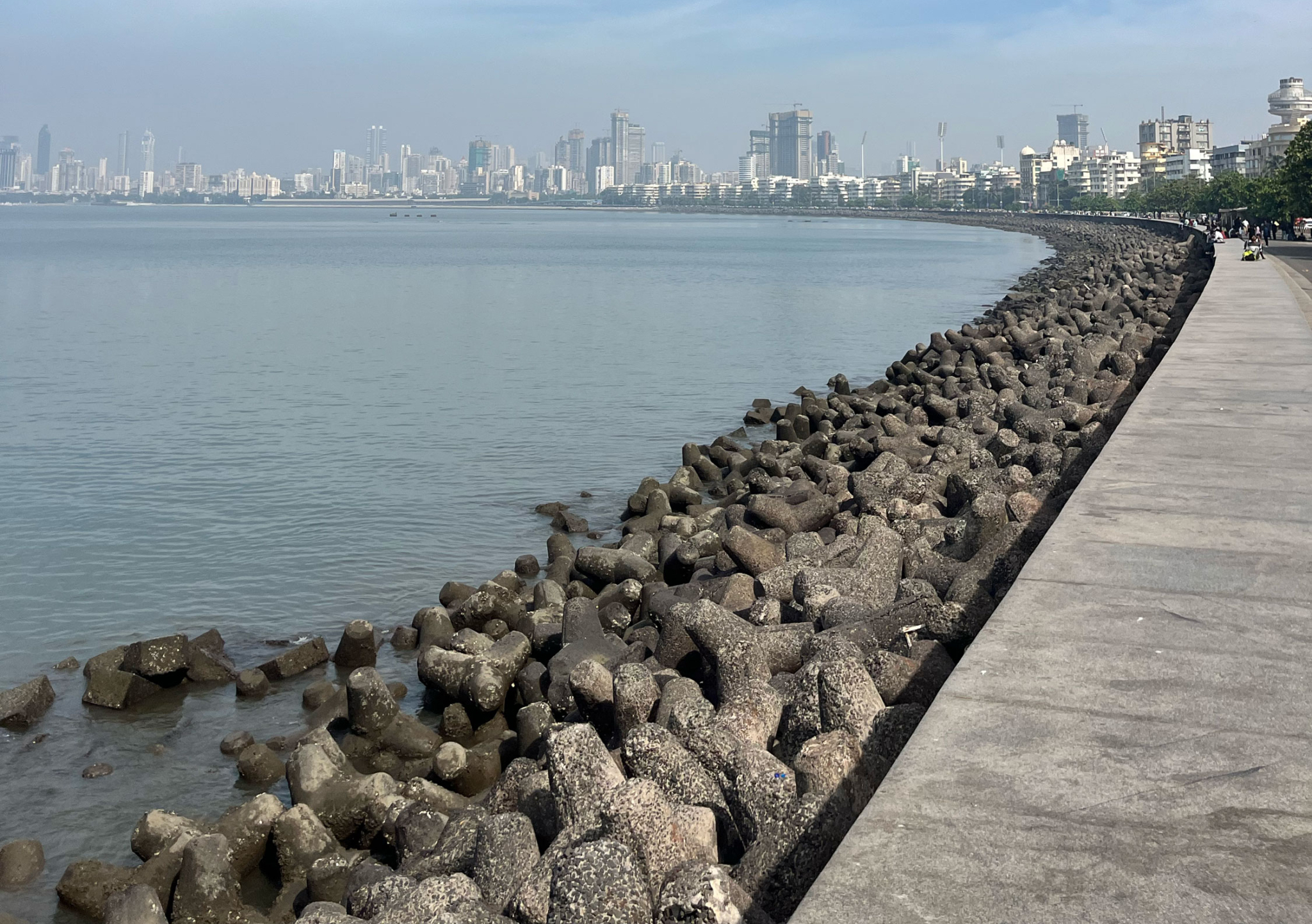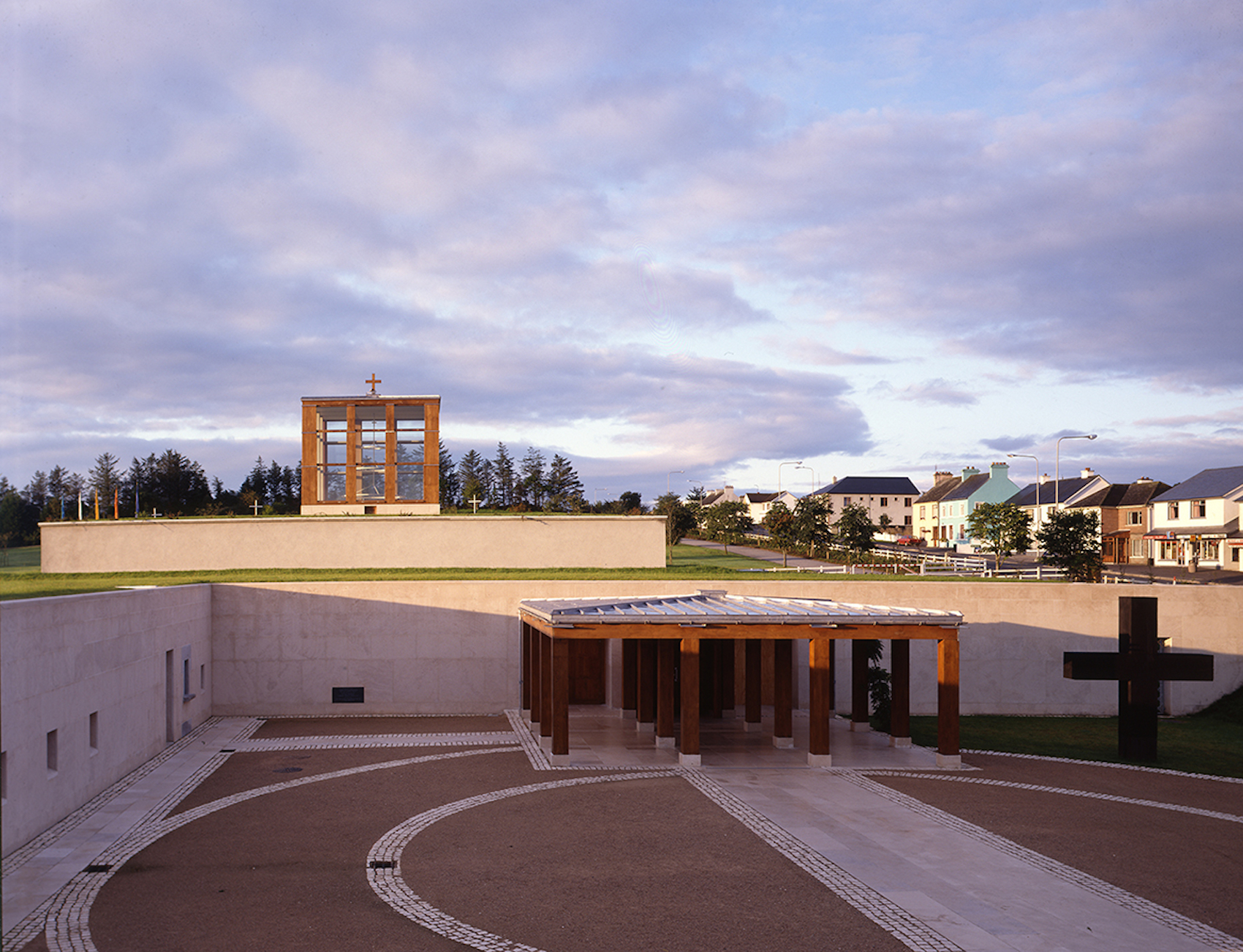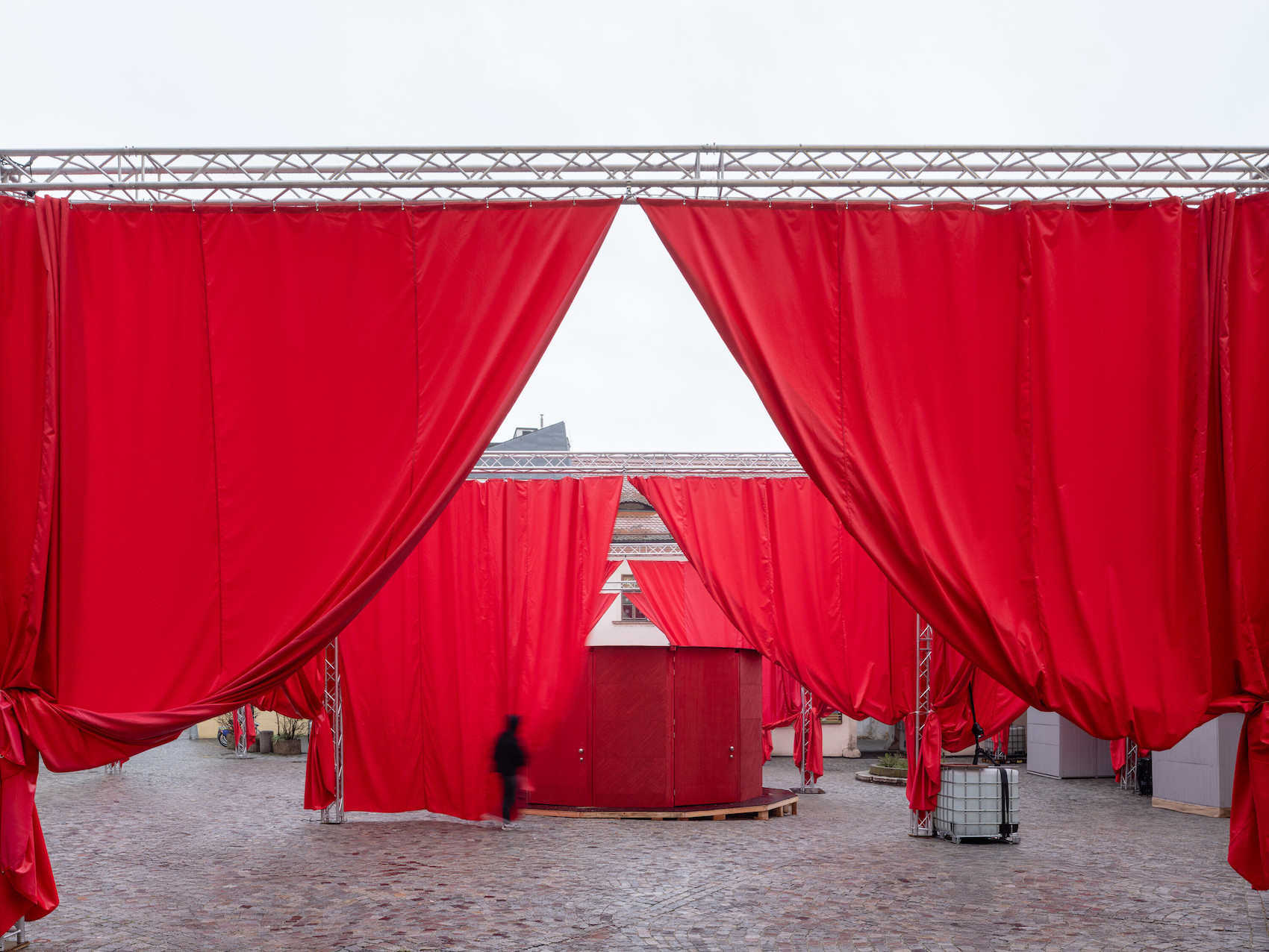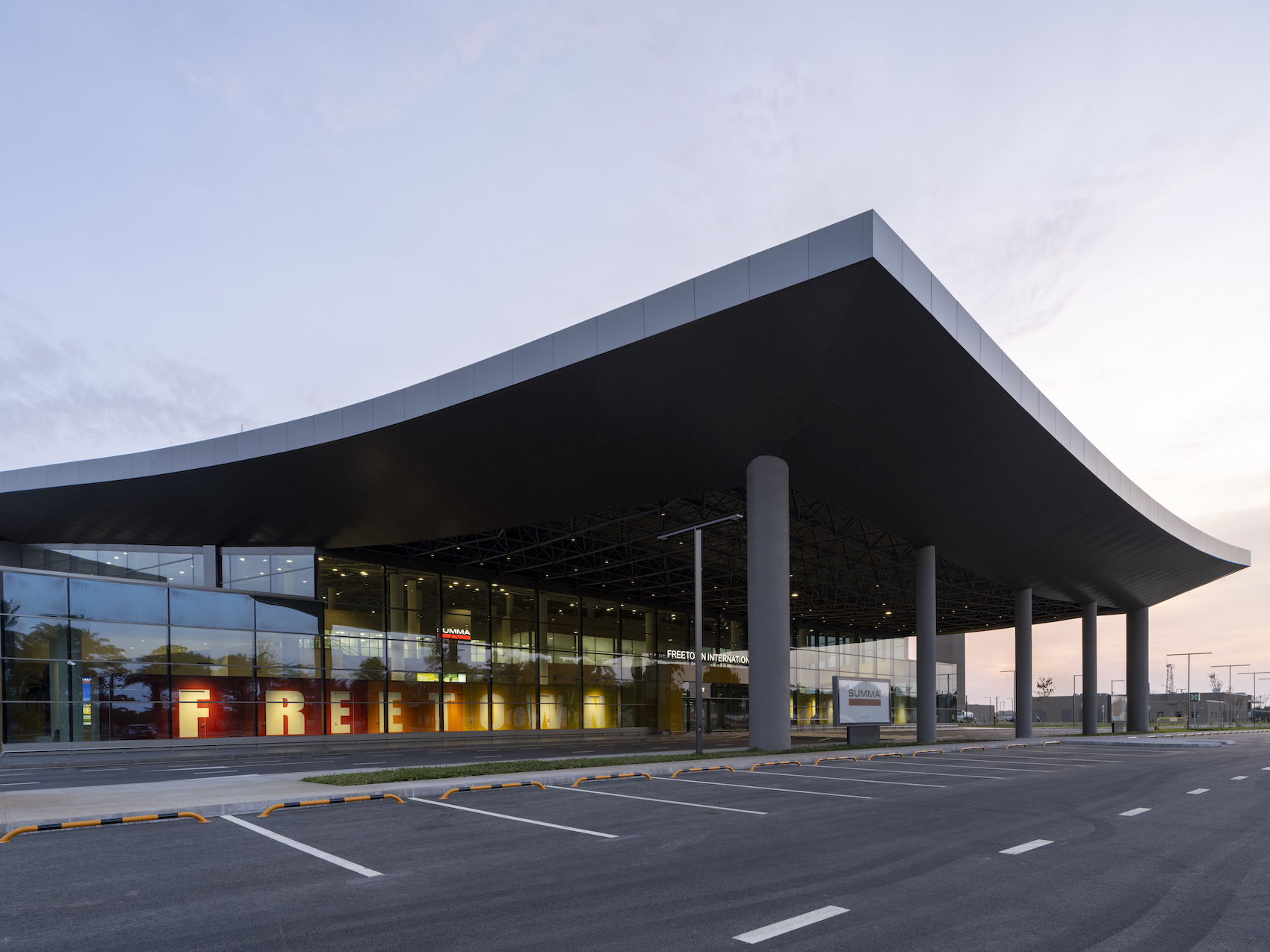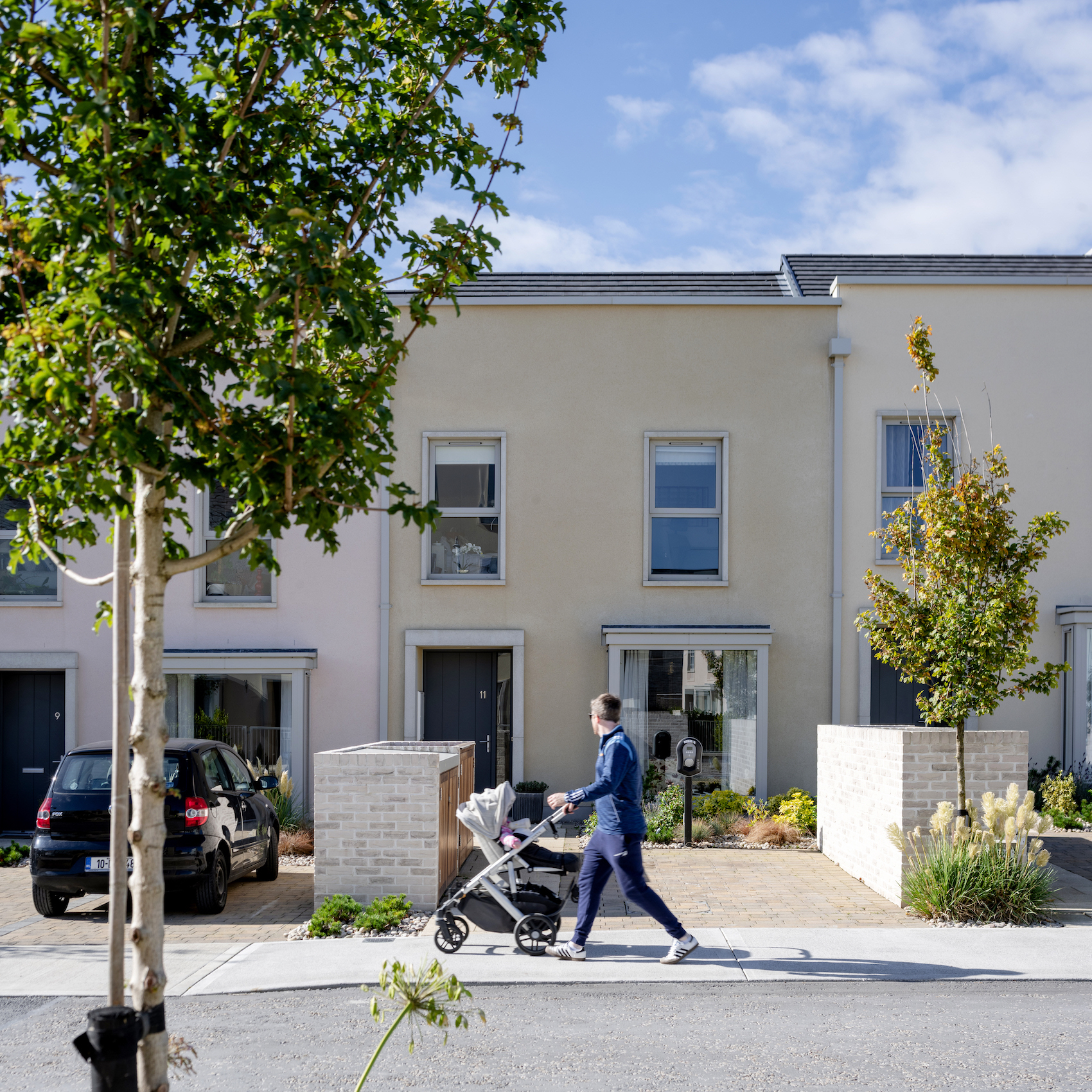A workplace for scientists and a machine for solar spectacle, Louis Kahn’s Salk Institute is functional, poetic – and impossible to photograph.
Sunlight dances across the narrow channel etched into the travertine floor (photo: Mark Roger Bailey – Adobe Stock).
At sunset… Come eight o’clock on a spring or summer evening, the Salk Institute will start to gather the last of the day’s colours and set them into whatever configuration suits its purposes. Louis Kahn’s biomedical facility in La Jolla, California – built in 1963 to house the laboratory of famed researcher and discoverer of the polio vaccine, Jonas Salk – is perhaps best understood as a machine for solar spectacle, its two serrated blocks separated by a central axis aligned due west to peer over the lip of a sheer sandstone cliff, the Pacific at the bottom. Starting in approximately April, the sun will descend more or less along the midline of the complex, and in its last throes appears to set alight the narrow channel etched into the travertine floor of the complex, as though the water in it (flowing seaward towards an ornamental cascade on the far end) had turned to liquid flame. It is at this hour, when the staff has long since left and the security guards are at their most amenable, that the amateur photographer has the greatest odds of striking visual paydirt. The flecked concrete volumes have been known to take on the shimmering pink and white of a live anemone.
In the rain… It happens more often than people think (just ask Albert Hammond). While scholar Marvin Trachtenberg has noted how much the design “recalls the gardens of Mughal India and Renaissance villas,” Salk quickly sheds any such subtropical associations the instant the sky starts to bruise: at that point, with its lower subterranean level cast in darkness, the place seems less like a thing of the past than a fragment of a chilling urban future, a lunar base or a habitable weapon. It is really dangerous, too, as the water slicks up the marble plaza and the visitor must tread carefully to seek shelter in one of the boxy passageways, ten to each side, that pass under the jutting, teak-fronted offices which turn their pale faces towards the ocean. The elements are certainly not kind to the wood, nor to the concrete – though the latter has lately been restored, the former, its cement based on an ancient Roman formula, takes a beating in the wind and the salt air, the façade chipped and spalled to reveal the knotty rebar beneath. It has been suggested, by historian Anna Rosellini among others, that Kahn’s attraction to rough, pitted béton brut was a psychic projection of his own scar- pocked face, the result of a childhood accident in his native Estonia. It seems doubtful; but if true, he might have appreciated what the weather has done, ugliness and ruin vying with the supernal.
Devoid of sunlight, the complex seems like a fragment of a chilling urban future (photo: Bryan Kelley – stock.adobe.com).
Around midday… Whatever else it is, Salk also happens to be (by most accounts) a very fine place to do what it was made to do – to facilitate scientists in curing chronic diseases and unlocking the secrets of DNA. Having played host to numerous Nobel laureates, and having fostered major contributions to fields as varied as agriculture, coastal restoration, and Alzheimer’s prevention, the institute that Kahn and his client built opposite the campus of the University of California San Diego has for the most part proved its functional mettle. Part of this success is attributable to the architect’s foundational concept: each of the three laboratory and study floors is separated from the next by a deck of mechanical systems, all of the wrought ducts and wires packed into thick cavities inside the flanking structures. As clear an articulation as any of Kahn’s notion of ‘served’ and ‘servant’ spaces, the design conceals and celebrates both in equal measure, the technical works embedded inside thick ramparts that pick up the light while shading the labs below them. The contrast is never sharper than on a hot afternoon, with the fellows walking back and forth along the covered walkways and down the stairs of the inward-facing towers, meeting each other in the central court or at the tables scattered around the fountain and pool at ground level. Paragliders dangle on the breeze, the sage scrub wavers. A nice place to work.
This, after all, was America’s gnomic, sometimes silly but usually compelling, Orphic-seer modernist-Fire God par excellence “
After dark… In the final reckoning, however, the building’s quotidian, practical advantages are not what matters. Kahn’s symbolic and poetic intentions always came first; this was, after all, America’s gnomic, sometimes silly but usually compelling, Orphic-seer modernist-Fire God par excellence, the only architect capable of such utterances as “I sense light as the giver of all presences,” and “Wonder stems from our ‘in-touchness’.” He also said, “The sunlight did not know what it was before it hit a wall”: an intriguing statement if one considers that, in theory at least, every building in the world must spend nearly half of its time in moonlight, a substance no less lyrical in its implications though a good deal less celebrated in the art of building.
Only the most intrepid would try to enter the Salk compound at night, when the primary entrance (via Anshen & Allen’s fairly unobtrusive East Building addition of 1995) is well shut, and the key-card gates around the perimeter are deactivated. For those who can catch a glimpse, however, it is under cover of darkness that the design’s most extraordinary aspect comes into view. Having subdued the sun, the complex begins to glow from within, its mottled surfaces radiating softly to an extent only partially accounted for by the reflection of the stars above and the sodium lamps nearby. The daytime operations were, it turns out, only a half of the building’s cosmic game; all along, it was straining to get the light inside, to recharge itself, as well as to give sanctuary to whatever unseen forces it had marshalled. No photograph I have ever seen quite does it justice, and it goes a long way to explaining why, as a child – visiting my grandparents, who had retired nearby – I believed that a dragon lived there, that his name was Joshua, and that he subsisted entirely off of the flesh of dolphins.


